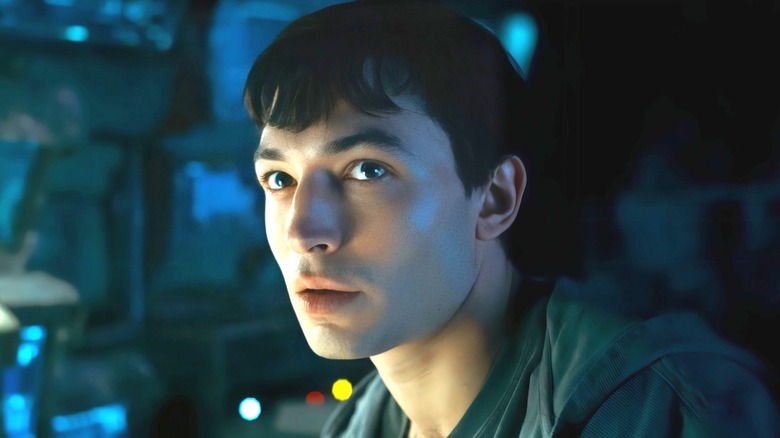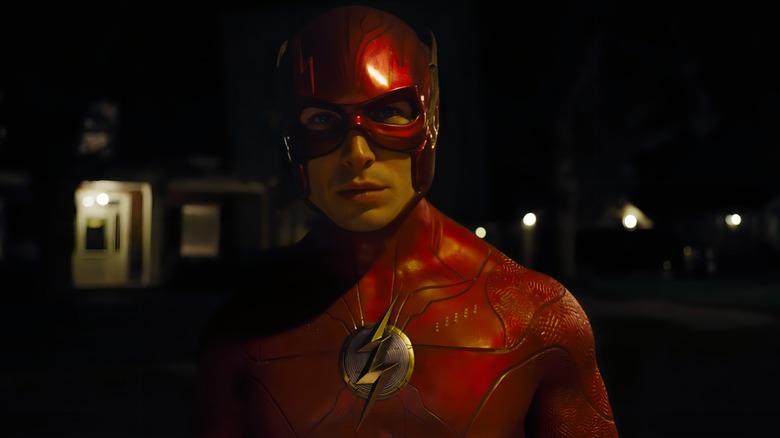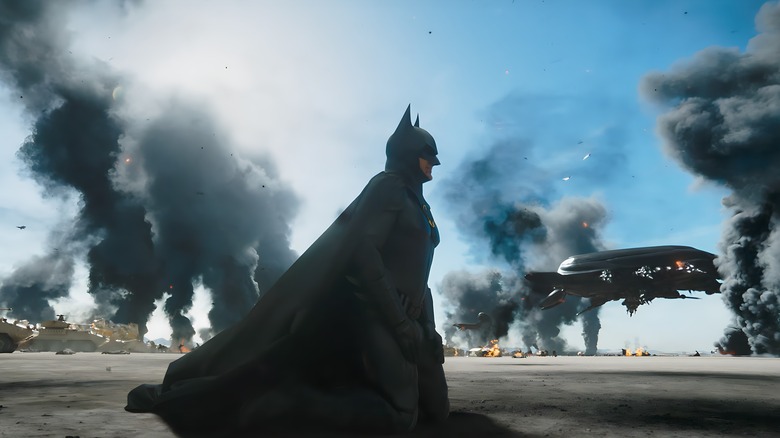The Flash's Post-Credits Scene Explained
Contains spoilers for "The Flash"
Does it count as a superhero movie if it doesn't have a post-credits scene? The Marvel Cinematic Universe may have introduced the habit, but it's become such an industry standard that the audiences have pretty much been conditioned into sitting through the credits in hopes of a glimpse of the heroes doing everyday stuff or being drawn into their next big adventure.
Being the cameo-heavy movie that it is, it's no surprise that "The Flash" opts to use its sole post-credits scene on one last huge guest appearance. The movie proper already features appearances by the DCEU Batman (Ben Affleck) and Wonder Woman (Gal Gadot), as well as decidedly non-actor-specific glimpses of Superman and an alternate-universe, un-Cyborgified Victor Stone ... among many others. As such, the presence of the last unseen Justice League member in the post-credits scene is welcome, though not entirely shocking.
The scene shows us the aftermath of an epic bender between Barry "The Flash" Allen (Ezra Miller) and Arthur "Aquaman" Curry (Jason Momoa). While it's clear that Aquaman has the size advantage, Barry's super-speedy metabolism protects him from inebriation, and he's clearly been drinking the big man under the table for quite some time. As the perfectly sober Barry recounts his multiversal adventures to stumbling, slurring Arthur, the viewers get a glimpse at the antics Justice League members get up to on their days off — and also gain some insight into where both Barry and the DCU stand after "The Flash."
The post-credits scene is a Momoa masterclass with heartwarming undertones
With his scene-stealing turn as the villain of "Fast X" and his impending return to Atlantis in "Aquaman and the Lost Kingdom," Jason Momoa is riding the crest of the cultural zeitgeist harder than ever. His comedy sensibilities are on full display in "The Flash" post-credits scene, as Aquaman tries and fails to insist that he's just as sober as his diminutive drinking buddy. After some highly amusing stumbling, he falls face-first into a dirty puddle near Barry's home, opts to stay there, and gives Barry a valuable Atlantean ring to pay for a beer run before passing out.
Funny as this is, there's also a heartwarming side to the scene. "The Flash" makes explicitly clear that Barry's very lonely, due to his lack of social skills and the isolation that comes from his superhero life and total dedication to proving that his father (Ron Livingston) is innocent. In fact, he even explicitly considers Bruce Wayne, a detached figure at the best of times, his closest friend. Against this background, the revelation that Barry hangs out with Arthur means that he does have friends after all — and, together with his budding relationship with Iris West (Kiersey Clemons), implies that the events of the movie have made him confident enough to move on and start building his personal life.
The scene tinkers with some big bat-ideas
Apart from Momoa's comedic chops and the sheer fun of getting to witness two mighty Justice League members on a friendly night out, the post-credits scene does some heavy lifting to further establish one particular concept from the movie. "The Flash" features multiple versions of Batman, and the dialogue of the post-credits scene makes a point of driving home the fact that while they're all Batman and Bruce Wayne, they're also all very different people.
For much of its runtime, "The Flash" is just as much a Batman movie as it is a speedster one. From waving apparent goodbye to both Ben Affleck's and Michael Keaton's versions of the character to seemingly bringing back George Clooney's "Batman & Robin" one, the movie spends a ton of time pondering different Batmen even before the post-credits scene. Having Barry specifically bring up the "all versions of Batman look different" thing one last time seems custom-designed to reassure the viewer that it's all right to have lots of Batmen running around ... which is probably a good move, given James Gunn's DCU's apparent insistence to run with multiple ones.


